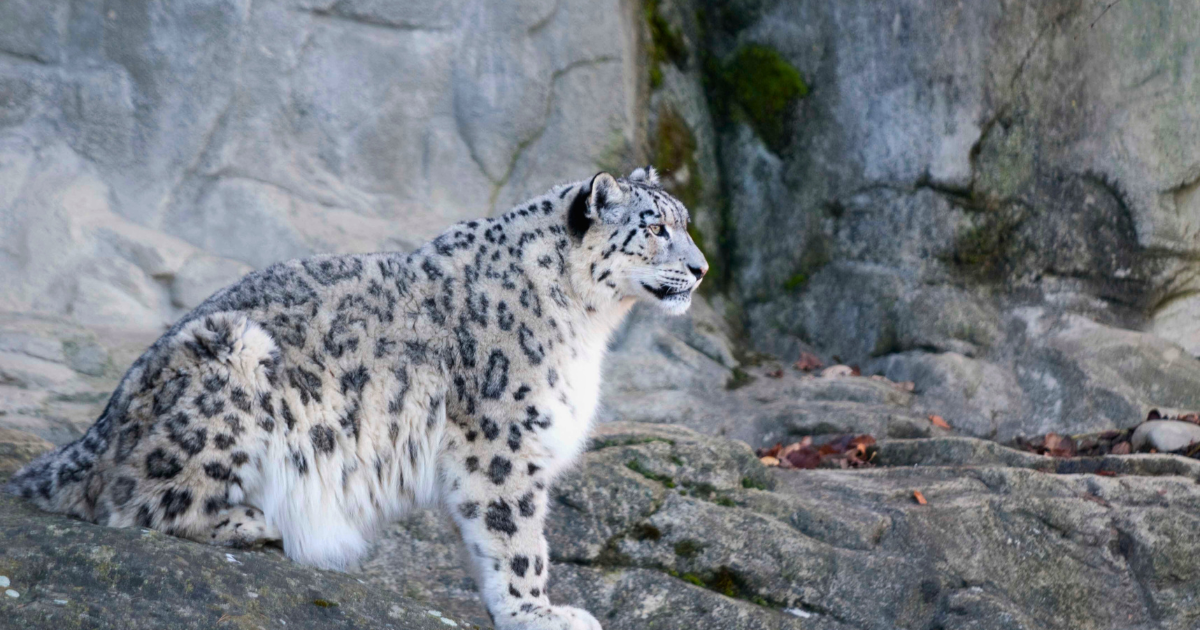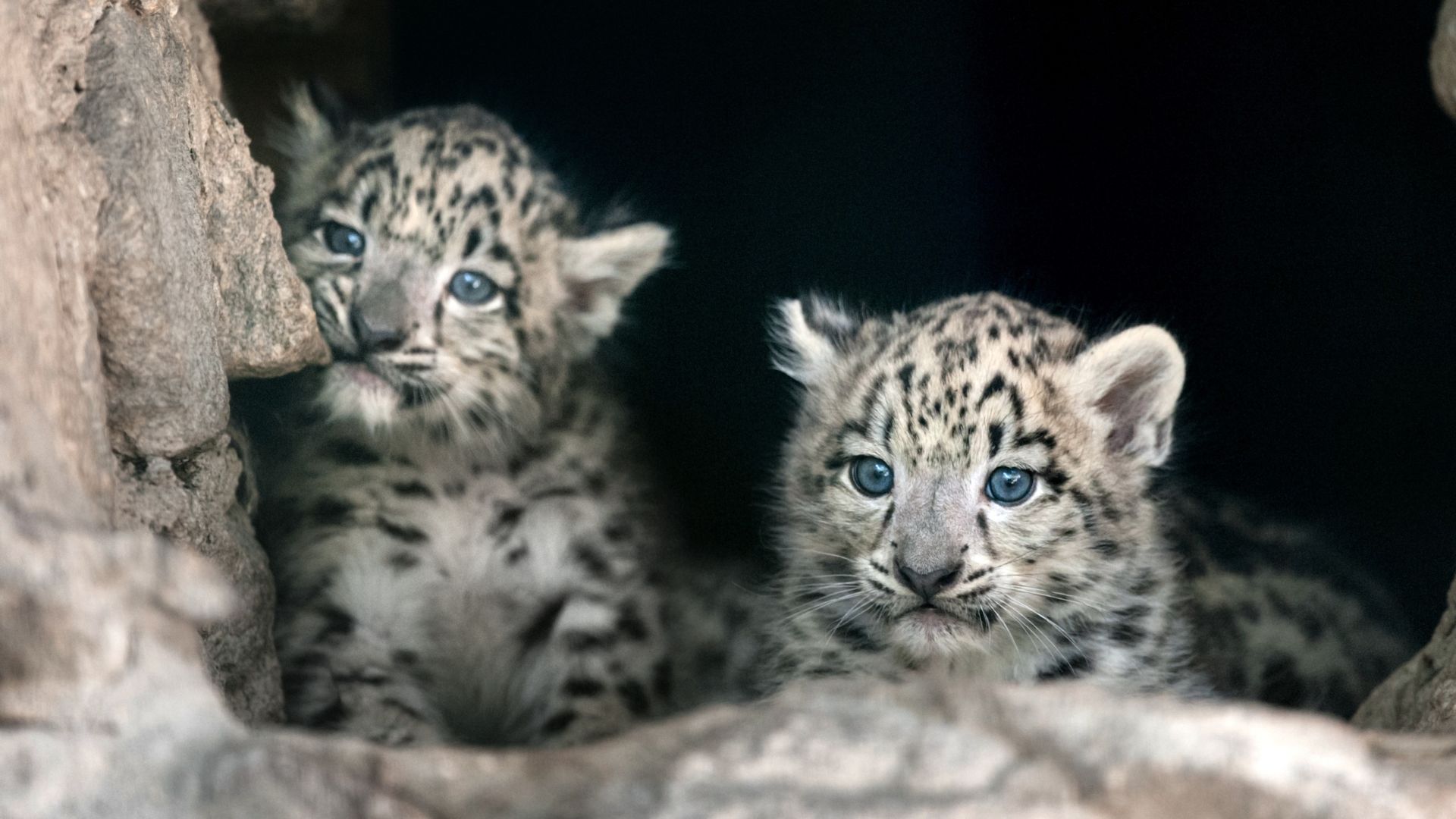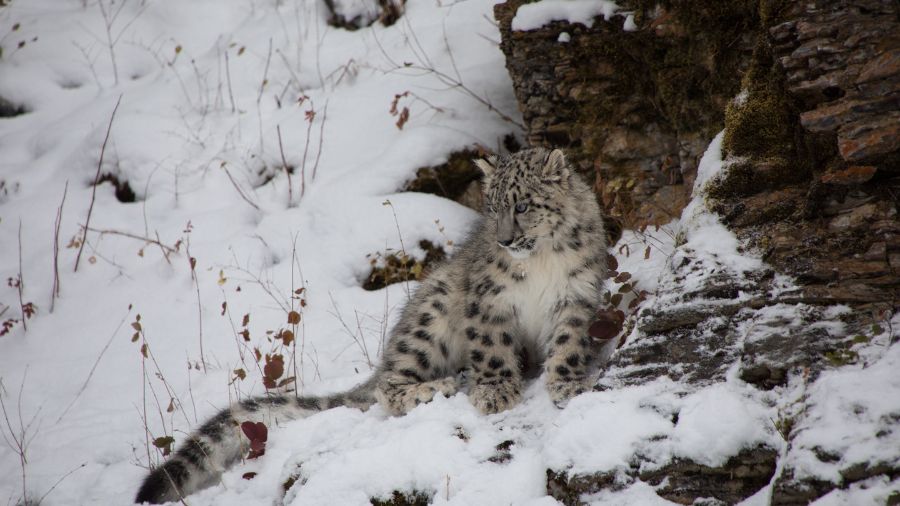
Snow Leopard in Nepal: The Guardian Spirits of the Himalayas

Snow Leopard in Nepal: The Guardian Spirits of the Himalayas
swotah travel
1178
15, 09 2023
Snow leopards are large cats of the Panthera Genus found in the rugged high-altitude mountains of Central and South East Asia. The altitude that inhabits Snow Leopard ranges from 3000 m / 9842.52 ft to 4500 m / 14763.78 ft or even higher. Their body structure looks similar to Leopards but is characterized to have longer tails and smaller legs and ears. Snow Leopards have thick white fur to protect them from the deadly cold of the Himalayas. Their bodies have dark rosette patterns that might look similar but are unique for every individual (like fingerprints for Human beings ).
They are 55 cm / 1.80446 ft to 70 cm / 2.29659 ft tall, and their body length measures from 90 cm / 2.95276 ft to 120 cm / 3.93701 ft. Snow leopards have a thickly furred tail which is 80 cm to 100 cm long ( It helps them to maintain balance, and when in cold, Snow leopards are observed to wrap their tail around their bodies to gain more warmth ). Snow leopards are known for their strength and agility that comes from their strong limbs. Their limbs are 4.3 feet / 1.31064 m to 5 feet / 1.524 m long and muscular, which lets them leap and swiftly traverse through rugged rocky mountain paths.
In Nepal, snow leopards are protected in many protected regions, namely Kanchenjunga Conservation Area, Langtang Conservation Area, Annapurna Conservation Area, Makalu Barun National Park, Manaslu Conservation Area, Sagarmatha Nationa Park, Shey Phoksundo National park other than these places Rolwaling, Dolpo, Everest region, and western Himalayan region are the natural habitat for them ( they are mostly observed in arid or semi-arid, cold, alpine, sub-alpine and grasslands). The exact number of Snow leopards present in Nepal is not fixed as they are hard to see, which is why The government of Nepal has collaborated with Conservation organizations and estimated the number to be from 350 to 400.

When and where to visit Nepal to get sight of the Snow leopards?
It is a tricky job to behold the sight of the Snow leopards hiding amidst the glorious nature. So, let us help you pick the right place and the right time to increase the probability of witnessing their mighty presence.
-
The most suitable time of the year for spotting a snow leopard is the winter season, which lasts from November to February in Nepal. Snow leopards are seen descending to lower altitudes this time around to look for their prey, which makes seeing them a little more probable than in other seasons.
- Now, the where part. The conservation areas are the best and most convenient places to see snow leopards (mentioned above). Most of the conservation areas do accept domestic and international tourists. For this, you have to take a permit for the respective conservation area you have picked, follow all the rules and regulations they have set, maintain distance from the wildlife, and never do anything to disturb or harm them.
- If you do not want to get inside a conservation area and want to spot them outside, then hire a local guide who has experience and can anticipate the perfect timeline. Places with higher chances ( Upper Dolpo, Manang, Mugu, Taplejung, etc. )
Suggestion: It is not easy to spot a snow leopard in the wild as they are excellent camouflage and not very sociable, so it is better to spend more than a few days and try your luck.
Snow Leopard in Dolpo
Dolpo, a naturally enriched region in northern Nepal, holds the majestic secrets of the elusive snow leopards. Enveloped by rugged landscapes dotted with ancient monasteries and a rich ecosystem, this area provides a tranquil habitat for the snow leopards, making it a popular destination for wildlife enthusiasts, researchers, and adventurers worldwide.
Adapting to the harsh and cold climate of the Dolpo region, snow leopards thrive in the challenging terrains, finding comfort and survival in the high altitudes that stretch across the valley. Here, in the quietude of nature, you might spot a snow leopard embracing the sun on a chilly morning or hunting in the silent realms of the snowy landscapes, a sight that can only be described as magical.
Swotah Travel and Adventure offers an incredible journey to discover the elusive snow leopard in its natural habitat in Dolpo. This special package designed meticulously for wildlife enthusiasts is not just a trek but an adventurous exploration promising a chance to witness the rare and majestic snow leopard. Throughout your journey, you will be guided by experts who are well-versed in the habitat and behavior of snow leopards, increasing your chances of spotting one.

Interesting Facts about the Snow Leopards: Ghost of the Mountain
-
Even though they are known as Himalayan predators, there are few records of them being aggressive toward Humans.
-
They do not hibernate even during the coldest time of the year.
-
Their rossett patterns and fur almost match the color of snow, making them excellent camouflage.
-
To survive in higher altitudes with lower oxygen levels, Snow Leopards have very wide chest cavities and strong pulmonary organs.
-
To adapt to cold, their nasal cavities are known to warm the air as they inhale it, their thick fur acts as an insulating jacket, and their ear morphology prevents the body heat from escaping.
-
Their pregnancy lasts from 93 days to 110 days.
-
Snow leopards are territorial animals. Each individual has their own home territory ranging from 12 sq meters to 40 sq meters.
-
They are known to climb and scale dangerous cliffs and slopes with ease. Their large paw helps them make a firm grip, and their tail helps them balance well.
-
Snow leopards have bright blue, green, or grey colored eyes that are strikingly beautiful. In addition, they have comparatively large pupils that help them see in dim light or dark better.
-
They have sharp, long, and strong teeth that are well adapted to tear and slice the meat and bones!
-
Snow Leopard's tongues are rough and covered with tiny barbs made up of keratin, known as filiform papillae. These unique features of help to clean their fur and strip off the meat from bones while munching on their prey.
IUCN (International Union for Conservation of Nature) has listed snow leopards as endangered species. As per the snow leopard conservation action plan, there are about 3921 to 6290 snow leopards worldwide, which is alarming. According to the Department of National Park and Wildlife Conservation under the Ministry of Forest of Environment of the Government of Nepal, the following are the main culprits for this outcome: The human-snow Leopard Conflict, Reduction of natural prey base, Habitat Loss and Fragmentation due to deforestation, Human Settlements, and Livestock grazing.
-
Human-Snow Leopard conflict: It refers to conflicts that arise between humans and snow leopards due to human behaviors and activities that affect Snow Leopards adversely, be it directly or indirectly and vice versa. Some of them are Retributive killing (people killing or arming Snow leopards due to disliking they have as Snow leopards prey on their pets, farm animals, etc.,), Livestock predation by Snow leopards: these creatures preying on the local’s farm animals, causing them to go in loss which leads them to retaliate Snow leopards, competition of resources between Humans and Snow Leopards: it is no news that Humans tend to damage wild for their own needs which decreases habitat and prey for Snow Leopards, etc.
-
Reduction of natural prey base: Snow leopards feed on prey that resides in the wild, like Blue Sheep, Marmots, Hare, Himalayan Thar, Pika, small rodents, etc. The number of these prey is decreasing immensely due to overhunting, climate change, Loss of Habitat, etc., eventually decreasing the number of Snow Leopards.
-
Habitat loss and fragmentation due to deforestation: Human civilization is not confined to cities due to the rapid increment in Human population leading them to destroy forests and expand their settlements. Other than this humans cut trees for wood, fruits, and herbal medicines. Some are known to smuggle trees for their own selfish needs. Deforestation means destroying the homes of wild animals, including Snow leopards.
What has The Government of Nepal done to fight against it?
-
The government of Nepal has made protected areas and implemented conservation policies.
-
For effective results, the Government has signed a Snow Leopard Conservation action plan (2017 to 2022) in collaboration with conservation organizations. It aims to balance the ecosystem, reduce Human-snow leopard conflict, and possibly increase the number of Snow Leopards.
-
They have conducted many campaigns to raise awareness in the local communities on why and how to protect Snow leopards and taught them to conserve Snow Leopard’s natural habitat instead of deteriorating it.
-
The Government has done scientific research on Snow Leopards, their habitat, and their prey and collected data to make strategies on what steps are to be taken to get Snow Leopards off the list of endangered species.
-
Law enforcement and their implementation: The national Government has the law under the National Parks and Wildlife Conservation Act 1973 and Appendix I in CITES law. The local government has implemented additional rules and regulations that are required to protect the Snow leopards.
-
As it is a global issue, The Government of Nepal has collaborated with many international bodies like Snow Leopard Trust, Global Snow Leopard, and the Ecosystem Protection Program etc.
-
They have followed anti-poaching measures to protect the Snow Leopards from illegal hunters and Poachers. The National Park and Wildlife Conservation Act charges Snow leopard hunters with Nrs 50,000 ($379.82 as of June 2023)fine or get imprisoned for 5 to 15 years or both.
Why does the Earth need Snow Leopards?
The first but obvious need of snow leopards is to balance the ecosystem. As they are prime predators of the mountain region, they keep the number of other animals in check and don’t let any particular animal overpopulate the ecology. Snow Leopards are indicator species which simply means their presence or absence and the number goes on to show the condition of the entire ecosystem and how balanced the ecosystem actually is. The local primitive inhabitants of the mountain region consider snow leopards to be the symbol of strength, resilience, and unity; therefore, snow leopards also have some cultural significance.
Other than these, Snow Leopards can uplift the nation's economic status by attracting tourists and increasing revenue. Last but not least, this stunning big cat is very useful for research purposes that help us better understand Snow Leopards and entire wildlife. These studies provide us with a better understanding of how to protect and preserve all wild animals effectively.
NEWSLETTER SIGNUP
Sign up to receive our trip ideas and travel offers!
Get updates and Exclusive Offers up to 20% Discount








